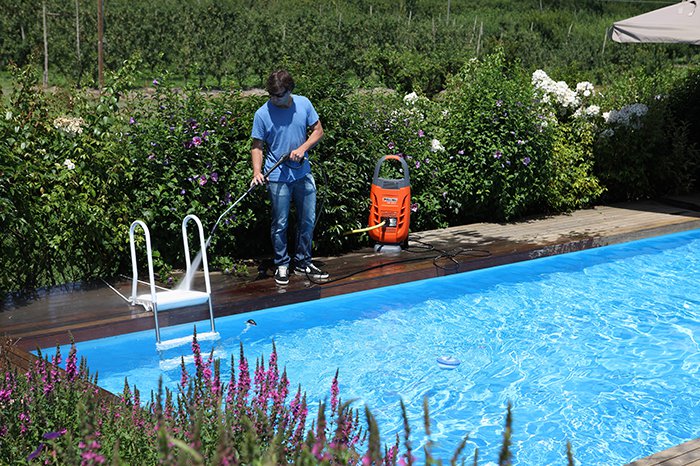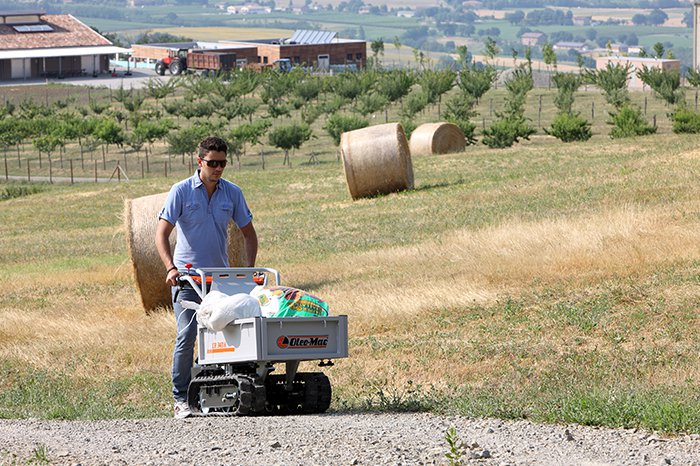Gutters and drainpipes help to collect and discharge rain, snow and other precipitation on the roof. The horizontal channels (gutters) collect precipitation and convey it to the vertical drainpipes, which discharge it into drains leading to the sewer system, or directly onto the ground. They therefore protect the structure of the building, preventing rainwater from running down the walls (causing discoloration, mould growth and detachment of plaster, etc.) and soaking them, resulting in seepage into the home.
Therefore, to avoid unpleasant and costly inconveniences, it is important to keep gutters and drainpipes unblocked, so that they can do their job properly. How to clean gutters and drainpipes is the focus of this article: keep reading!
Why clean guttering?
Due to its shape, guttering tends to collect leaves, twigs, soil, nests and everything else that may be deposited there or on the roof, carried by the wind and by birds. The organic material then breaks down into sludge. All this grime obstructs the flow of rainwater until it overflows the gutter, besides clogging drainpipes. Its weight, added to that of the water, can even cause gutters to collapse.
For these reasons, cleaning gutters is an essential task that shouldn’t be neglected or put off. However, it is also one of the most thankless home maintenance chores: uncomfortable, laborious, tiring... You can hire a tradesman to do it for you, but today we will explain how to save a few pennies by cleaning your gutters yourself. Even better, we'll show you how to clean gutters without getting on the roof, by working from the ground or minimising the use of a ladder.
Do-it-yourself gutter cleaning is an option if you live in a 1- or 2-storey building, where gutters are low enough to be accessible from the ground or with a ladder. As an alternative to a ladder, you can use a small mobile scaffold tower, of the type used by plasterers and painters. Bearing in mind the weight of the equipment you will need for gutter cleaning, a transporter may come in handy.
How to clean gutters without getting on the roof
Gutter cleaning should be done at least once a year, ideally in summer. For your safety, choose a dry day and, if using a ladder, avoid windy weather. Keep in mind that it's easier to clear gutters when the debris is damp (but not soaked), rather than when it's dry and compacted. While cleaning gutters and drainpipes, it’s also an opportune moment to check whether they are in a good state of repair or if any component needs repairing or replacing. In addition, to prevent leaves and other material from settling in the gutters, once you’ve finished the job you can also install a protection system, such as a leaf guard.
Protect your hands with (preferably waterproof) utility gloves and wear protective spectacles or a face shield and non-slip shoes. At high altitudes, wear an EN 397-approved helmet equipped with a chin strap. You will also need a bucket to collect the litter clogging the gutters and drainpipes. To more easily remove the accumulated debris, you can equip yourself with a spatula or scoop and clean the gutters one section at a time, repositioning the ladder (or scaffolding) as you progress.
Standing on the ground you can use a telescopic tool – there are different types on the market – to reach over the top of the guttering and pile up the debris in one place, so you don't have to keep moving back and forth along it and repositioning the ladder. That way, you will only need to climb the ladder as many times as is necessary to remove the debris pile, without fear of overreaching at the top of the ladder. Make sure not to climb higher than the third step from the top (it should be marked on the ladder).
Finally, run water through the guttering with a garden hose: besides washing away residual dirt, check whether the drainpipes are clogged.


Are your drainpipes blocked? You can unblock them easily without a ladder, using a high-pressure washer with drain clearing attachment:
-
Access the outlet where the drainpipe discharges water into the drain or onto the ground.
-
Insert the probe up the drainpipe and slowly push it upwards until it contacts the material blocking it.
-
Turn on the high-pressure washer and pull the gun trigger: the water pressure will dislodge the obstruction and allow the probe to advance further up the drainpipe.
-
As the probe clears a passage, keep sliding it upwards until the drainpipe is completely clear.
-
Turn off the high-pressure washer and pull out the probe.
-
Move on to the next clogged drainpipe.
When using a ladder to clean your gutters, exercise caution while working, using another person to help you steady the ladder. It must be in perfect condition and firmly planted, with both feet on a stable, dry and non-slip surface and the top ends resting on a flat, solid wall. The ladder should be leaning at an angle of approximately 70° with respect to the ground. To prevent the ladder from slipping or tipping backwards or to the side, the ladder uprights should be secured to anchor points using rope or cord. Finally, you can wear a harness, securing it to a fall arrest system and a work positioning lanyard.
On the subject of safety, take constant care to ensure that your high-pressure washer – if you don't already have one, here you can read our guide to choosing one – is always safe and efficient: here's how to maintain a high-pressure washer.
Precipitation is essential for the ecosystem but, as we have seen when talking about clogged gutters and drainpipes, it can lead to damage. The same can happen if you have a serious water stagnation problem in your garden or vegetable patch: you can fix that by building a drainage channel.









